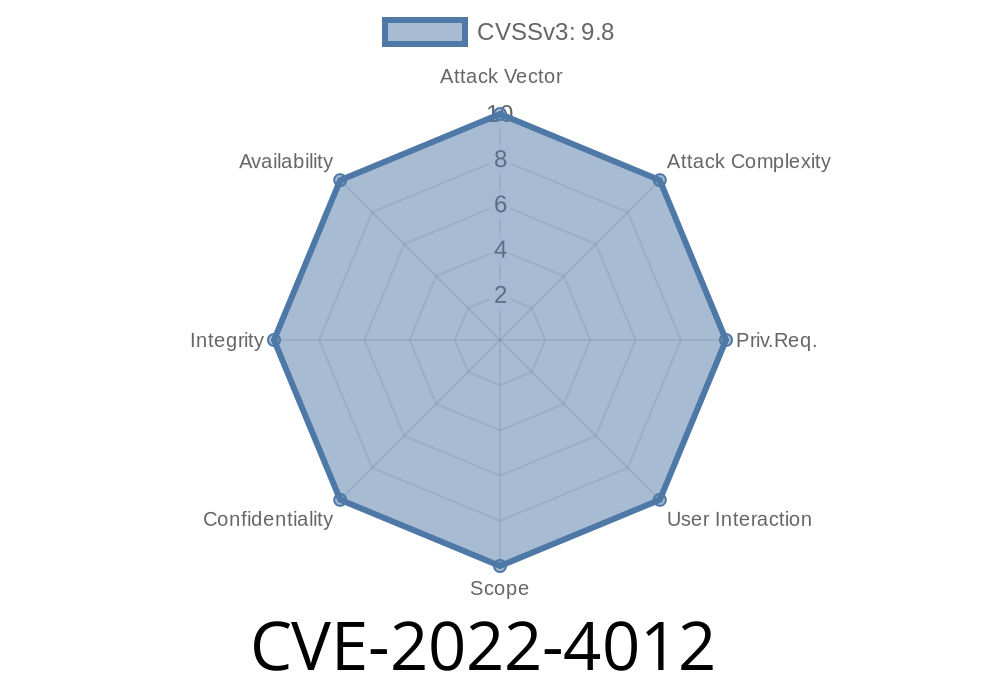A critical vulnerability (CVE-2022-4012) has been discovered in the popular Hospital Management Center software. This vulnerability has been classified as critical due to the high potential for data breaches, including unauthorized access to confidential patient records, and could potentially be used by hackers for malicious purposes. This post will detail the vulnerability, provide code snippets, and link to the original references. The vulnerability has an assigned identifier of VDB-213786 and has been made public, allowing for potential exploitation by malicious actors.
What is Hospital Management Center?
Hospital Management Center is a software solution designed for efficient management of various administrative tasks within hospitals and healthcare facilities. The software automates several processes such as patient registration, billing, and electronic medical record management. It aims to improve patient care, reduce costs, and streamline organizational tasks.
Vulnerability Details
The CVE-2022-4012 vulnerability exists within an unknown file function of the patient-info.php file. This file is responsible for handling patient information, making this vulnerability critical and alarming. The vulnerability affects the manipulation of the argument pt_id, which can lead to SQL injection attacks. These attacks can exploit weaknesses in the software's underlying database structure, potentially allowing unauthorized access to sensitive patient data.
Exploit Details
Attackers can execute this exploit remotely, without any need for physical access to the targeted system. By manipulating the pt_id argument in a specific manner, attackers can inject SQL code that can compromise the security of the Hospital Management Center software. This code can then be used to access and manipulate the database containing sensitive patient information.
Below is a code snippet demonstrating a potential attack using the CVE-2022-4012 vulnerability
// URL: http://target.com/patient-info.php?pt_id=1
// Payload: ' UNION SELECT 1,2,3,4,5,6,7,8,9,10,11,12,13,14,group_concat(column_name),16,17,18,19,20 FROM information_schema.columns where table_name=CHAR(112,97,116,105,101,110,116,95,105,110,102,111) -- '
With this payload, an attacker could potentially extract all column names from the patient_info table, revealing the structure of the database and facilitating further attacks.
To learn more about this vulnerability, consult the following resources
1. CVE-2022-4012 - Hospital Management Center patient-info.php SQL Injection - Original disclosure of the vulnerability, detailing its exploitation methods and potential impact.
2. Hospital Management Center - Official Website - The official hospital management center website, featuring software information and updates.
3. SQL Injection - OWASP - The Open Web Application Security Project covers the basics of SQL injection attacks, prevention measures, and more.
Conclusion
It is crucial for organizations dependent on Hospital Management Center to address this vulnerability (CVE-2022-4012) as soon as possible. Immediate action is necessary to ensure the security of patient data and prevent unauthorized access by malicious actors. Keeping software up-to-date, following industry best practices, and implementing robust security measures are essential steps toward maintaining a secure and effective healthcare IT environment.
Timeline
Published on: 11/16/2022 08:15:00 UTC
Last modified on: 11/17/2022 14:58:00 UTC
